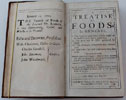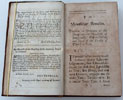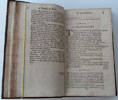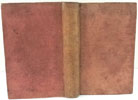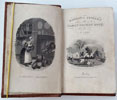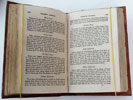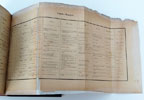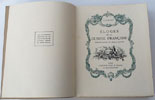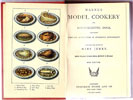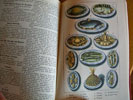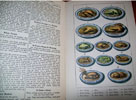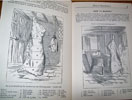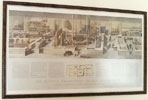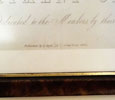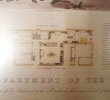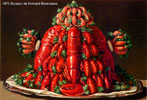Careme.
Marie Antonin
- The rarest edition bound in Kangaroo.
LE PATISSIER NATIONAL PARISIEN
TOME 1. - OU TRAITE ELEMENTAIRE ET PRATIQUE DE LA PATISSERIE ANCIENNEET MODERNE. Suivi d’observation utilesau progress de cet art. Par M.A. CAREME, de Paris.. Auteur du Patissier pittoresque, du Maitre-d’ hotel francaise, du Cuisinier parisien ou L’Art de faire la Cuisine francaise ou xix siècle. NOUVELLE EDITION, REVUE ET CORRIGEE ORNEE DE NOMBREUSES FIGURES. TOME PREMIER. (A nice etching of a raised pie on a dish) PARIS. GARNIER FRERES, LIBRAIRES-EDITEURS. 6, RUE DES SAINTE-PERES, 6. [n/d circa 1879].
TOME 11. - LE PATISSIER NATIONAL PARISIEN OU TRAITE ELEMENTAIRE ET PRATIQUE DE LA PATISSERIE ANCIENNEET MODERNE. Suivi d’observation utilesau progress de cet art. Par M.A. CAREME, de Paris.. Auteur du Patissier pittoresque, du Maitre-d’ hotel francaise, du Cuisinier parisien ou L’Art de faire la Cuisine francaise ou xix siècle. NOUVELLE EDITION, REVUE ET CORRIGEE ORNEE DE NOMBREUSES FIGURES. TOME PREMIER. (A nice etching of a Chartreuse on a dish) PARIS. GARNIER FRERES, LIBRAIRES-EDITEURS. 6, RUE DES SAINTE-PERES, 6. [n/d circa 1879]
TOME 1. 193 x 124mm. 1 new fep. Tipped in original yellow paper cover with same text as title page. [1] Original fep with bookplate on verso. Half-title with Careme’s portrait on the verso. Title Page. [1]. (1)vi Dedication to M. Boucher dated 1815. (1)viii – x Preface. (1)xii – xxxiii Discours Preliminaire. [1] (1)xxxvi Division de cet ouverage. (1)xxxviii – lxviii Vocabulaire. (1)2 -421. [1] 424 – 430 Table des Metieres. 1 original Fep. Tipped in original yellow-paper back cover. Overall an extremely nice clean copy with untrimmed pages and etchings in the text. Rebound in beautiful modern half red Kangaroo leather, marbled boards, raised bands to spine with fine gilt tooling to compartments. (The binding done by Roger Perry of Queensland, Australia. He has over 40 years of bookbinding experience having been indentured to the famous Bayntun’s of Bath. Along with his wife who is the paper expert they run a very small thriving business from their garage in the suburbs of Brisbane. An unlikely location for an expert binder! Roger showed me the difference between the standard European leathers and Kangaroo; Surprisingly tougher and smother than the other traditional bindings of calf, goat and sheep).
TOME 11. 173 x 120mm. 1 new fep. Half title. [1] [1] with a frontispiece of an Almond Pyramid. Title page. [1] (1)2 – 464. (1)466 – 478 Table des Metieres.. 36 pages of Advertisements. 1 original Fep. The first 24 pages with light foxing and somtime quite severely trimmed, but not affecting the text. This accounts for the smaller size of the 2nd volume compared to the first. Many etchings in the text. Rebound in beautiful modern half red Kangaroo leather, marbled boards, raised bands to spine with fine gilt tooling to compartments. Even though both volumes are slightly different in size, the binder Roger Parry has done a very good job matching the gilt work on the spines. Overall a very nice made-up set.
-
Marie Antonin Careme had a short but very unusual life. A story he told and retold as an adult tells us all that we know about the chef’s early childhood in Paris. Recorded by his secretary Frédéric Fayot, it recounts: “His parents, who had had twenty-five children, lived in the most abject poverty; his father, an unskilled laborer, frequently got drunk, perhaps out of disgust with life, and the irregularities of his conduct increased the misery and the distress of those for whom he was responsible. One Monday he came home before dinnertime and took his young son out for a walk. They went out of the city into the fields. After the walk, they came back in through the Main gate, near which they ate dinner. At the end of the meal, the father spoke to the poor child of his future, which was to be divorced from that of the family. “Go, my little one, go now; there are good trades in the world; leave us, misery is our lot; this will be an age of many fortunes [the Revolution was under way]; all that is required to make one is intelligence, and you have that; This evening or tomorrow, perhaps, some good place will welcome you. Go with what God has given you.”…The young Carême was left in the street, quite literally. He never saw his parents again; his mother and father died some years later; his brothers and sisters dispersed.”
Astonishingly a unknown tavern owner took him in that same evening and gave the eleven or twelve-year-old Carême his first break in life, The next day he offered the boy a job. Fate had intervened and pulled Careme into French cuisine -- How he would change it!
Later he would publish his famous book ‘Le Patissier Royal Parisien’. He also wrote of this period: “When I take a look around Paris, I see with pleasure in every neighborhood the improvements and the growth that the pastry shops have undergone since this work appeared; The pastry cooks of the suburbs, having my book in their hands, have not feared to move into the heart of the capital; those who had formerly worked in private households have set up in business for themselves, which they would never have dared to do without the aid of my volume.”
This was the time of the Revolution when cooks of the private households were leaving in fear of being tainted by the same red, white and blue republican fervor of the masses and ending up alongside their former aristocratic and headless employers. This was also the reason the ‘Royal’ of ‘Le Patissier Royal Parisien’ was replaced by the fearful and crafty publishers of ‘Le Patissier National Parisien’. Although this is a late copy of Careme’s great influential work, a complete set of the re-titled two volumes are rarer than any of his other books. None found in OCLC, COPAC, British Library or any major bibliographies nor auction records. The Library of Congress has an imperfect copy of Vol.2.

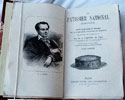
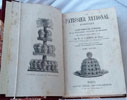
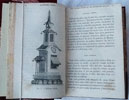
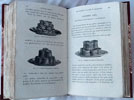

|
|

Antiquarian category
ref number:
11200
|

